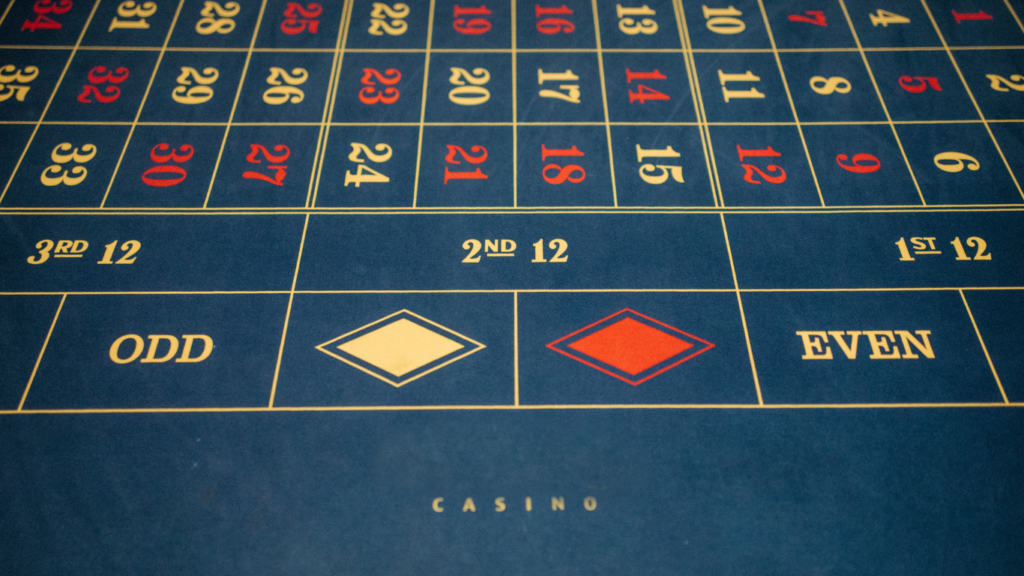Understanding Roulette Basics
Roulette, originating in 18th century France, offers a blend of chance and strategy. The game’s essential components include the wheel, ball, and betting table. European and American versions exist, with the main difference being the number of zeros on the wheel. European roulette has a single zero, while American roulette has both a single and double zero, affecting odds and strategy.
The betting table features various options, including inside and outside bets. Inside bets involve specific numbers or small groups of numbers; examples include Straight Up, Split, Street, Corner, and Six Line bets. Outside bets cover broader groups; examples include:
- Red
- Black
- Odd
- Even
- Dozens
- Columns
Players place chips on the desired bet areas before the dealer spins the wheel. The ball lands in a numbered pocket, determining winning and losing bets. Payouts vary based on bet type, with Straight Up bets offering higher payouts and outside bets providing better odds.
Understanding these fundamentals is crucial for developing effective strategies and maximizing success at the roulette table.
Popular Roulette Strategies

Experimenting with various strategies can enhance one’s success rate in roulette. Let’s examine some of the most popular systems used.
Martingale System
The Martingale System involves doubling your bet after each loss to recover previous losses and gain a profit. First, place a bet on an even-money outcome (e.g., red or black). If you lose, double your bet on the same outcome. Repeat this process until you win, resetting to your original bet after a win. The constraint here is the potential for high losses with consecutive failures.
Fibonacci Strategy
The Fibonacci Strategy uses a specific sequence for bet progression. Derived from the Fibonacci sequence, this system involves adding the last two bets to determine the amount of the next bet. First, start by betting the smallest unit. If you lose, move one step ahead in the sequence (e.g., 1, 1, 2, 3, 5, 8, etc.). Return two steps back in the sequence after a win. The sequence helps mitigate losses over multiple spins.
D’Alembert System
The D’Alembert System modifies the bet amount by one unit after each win or loss. First, select a base bet unit. Increase your bet by one unit after a loss, and decrease it by one unit after a win. This approach aims to balance losses and gains over time, producing a more stable betting pattern. While safer than the Martingale System, significant losses can still accumulate during prolonged losing streaks.
Utilizing these strategies with a clear understanding of their mechanisms can lead to more consistent success in roulette.
Advanced Strategies for Success
Understanding advanced strategies can significantly enhance your chances at the roulette table. Here, I’ll provide insights into some sophisticated techniques.
Wheel Bias Analysis
Wheel bias analysis involves identifying physical imperfections on the roulette wheel. If a wheel consistently favors certain numbers or sections, savvy players can exploit this. I look for wheels that show the same biases over hundreds of spins. To identify a biased wheel, I record results from various spins, scrutinizing for patterns or anomalies.
Sector Targeting
Sector targeting focuses on betting on specific sections of the wheel rather than individual numbers. This strategy relies on observing the dealer’s spin consistency and the ball’s behavior. By noting how the ball interacts with different wheel sectors, I adjust my bets to those areas. For instance, if I notice a dealer frequently landing the ball in a certain sector, I’ll place higher bets on those numbers.
Visual Ballistics
Visual ballistics involves predicting where the ball will land based on its speed and trajectory. This technique demands acute observation and quick calculation. I start by timing the wheel and ball rotations, then estimate the final position by tracking their intersecting paths. Mastery of this method can provide a significant edge, though it requires extensive practice and sharp observational skills.
Managing Your Bankroll
Effective bankroll management is crucial for consistent success in roulette. Here’s how to ensure that your funds are handled wisely.
Setting Limits
Establishing clear betting limits helps maintain control over your funds. Set two primary limits: a session limit and a stop-loss limit. For example, allocate $200 for a session and decide to stop if you lose $100. This approach prevents chasing losses and overextending your bankroll. It’s essential to stick to these limits without exceptions.
Record Keeping
Keeping detailed records of your bets allows for better analysis and adjustment of your strategies. Track each bet, the amount wagered, and the outcome. For instance, note patterns like winning streaks or losses on specific numbers. Data can reveal trends and inform future decisions, increasing your chances of winning. Use a simple spreadsheet or a dedicated app for efficiency and accuracy.
Common Mistakes to Avoid
Avoiding common mistakes in roulette increases your chances of consistent success. Focus on the following errors to prevent them and optimize your gameplay.
Ignoring the House Edge
Neglecting the house edge often leads to losses. European roulette has a house edge of 2.7%, while American roulette’s edge is 5.26%. Stick to European roulette to improve your odds.
Chasing Losses
Attempting to win back lost money often results in larger losses. Set strict stop-loss limits and adhere to them to maintain control over your bankroll.
Overlooking Bankroll Management
Failing to manage your bankroll effectively can end a session prematurely. Allocate a specific amount for each session and avoid exceeding it. Use strategies like dividing your bankroll into smaller portions to extend your playtime.
Relying Solely on Betting Systems
Believing that a betting system guarantees victories can be costly. While systems like Martingale and Fibonacci help manage bets and risk, they don’t eliminate the house edge. Combine these systems with advanced techniques for a more balanced approach.
Misunderstanding Probability
Assuming a number must hit because it hasn’t in a while is flawed. Each spin in roulette is independent of the previous ones. Base your bets on strategy and analysis, not superstitions.
Inconsistent Record-Keeping
Neglecting to keep detailed records prevents analysis of betting patterns and trends. Track wins, losses, and betting sequences to make informed decisions in future sessions.
Focusing on Short-Term Results
Expecting immediate success leads to frustration. Roulette requires patience and long-term planning. Review your strategies regularly and adjust as necessary for sustained improvement.
Overbetting
Placing large bets too quickly risks your entire bankroll. Start with smaller bets to establish a rhythm and gradually increase your stakes as you gain confidence.
Avoiding these common mistakes enhances your chances of consistent success in roulette. Incorporate these tips into your gameplay for improved results and a more enjoyable experience.



 Elizabeth Kaylor – Author
Elizabeth Kaylor is an experienced author and contributor at Smart Gamble Land. Specializing in casino game mastery and player psychology, Elizabeth provides readers with in-depth tips on how to approach popular casino games with confidence and precision. Her expertise in understanding player behavior, game dynamics, and strategy allows her to craft engaging content that appeals to both novice and experienced gamblers alike. Elizabeth's insightful articles offer readers the tools they need to thrive in high-stakes environments.
Elizabeth Kaylor – Author
Elizabeth Kaylor is an experienced author and contributor at Smart Gamble Land. Specializing in casino game mastery and player psychology, Elizabeth provides readers with in-depth tips on how to approach popular casino games with confidence and precision. Her expertise in understanding player behavior, game dynamics, and strategy allows her to craft engaging content that appeals to both novice and experienced gamblers alike. Elizabeth's insightful articles offer readers the tools they need to thrive in high-stakes environments.
